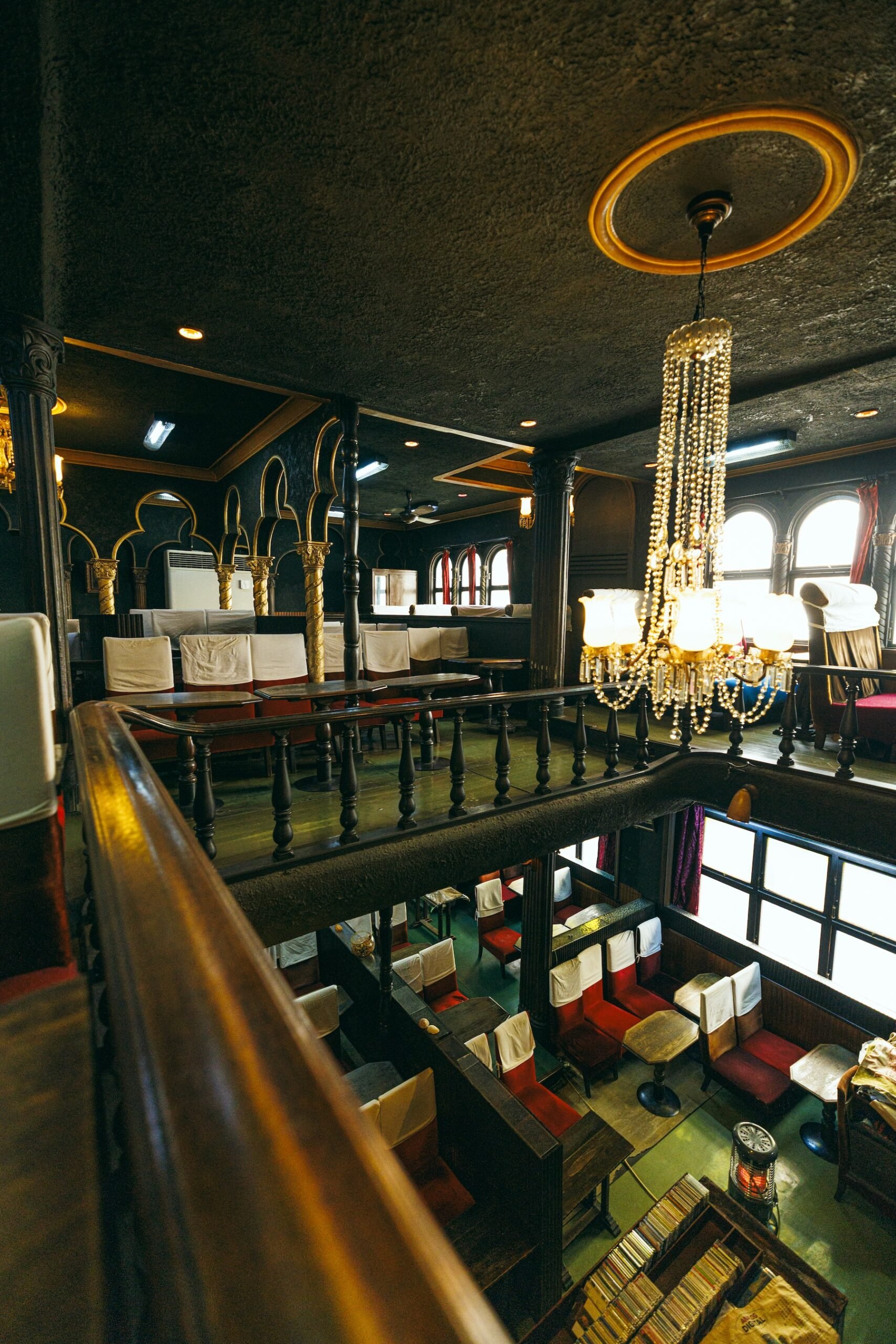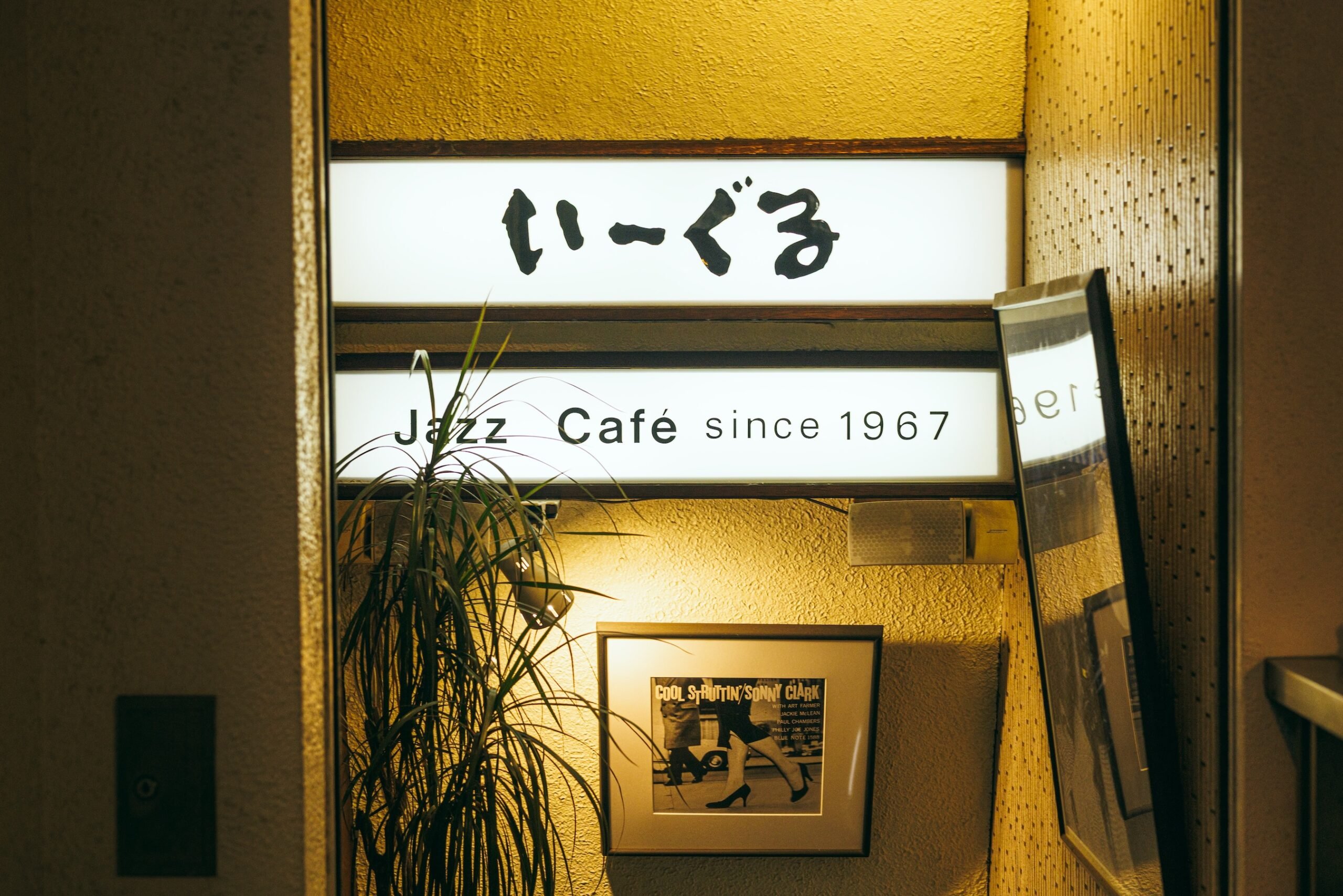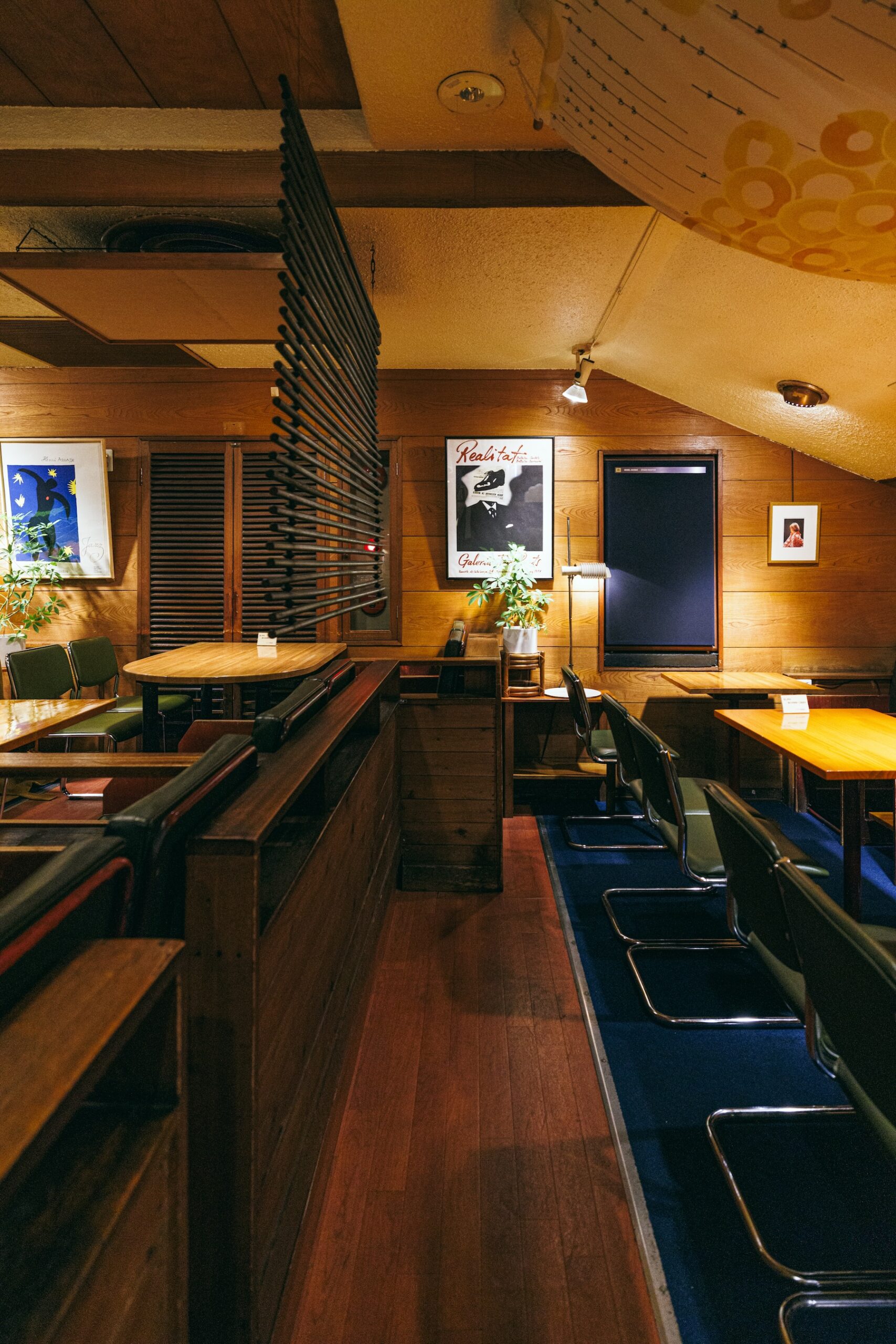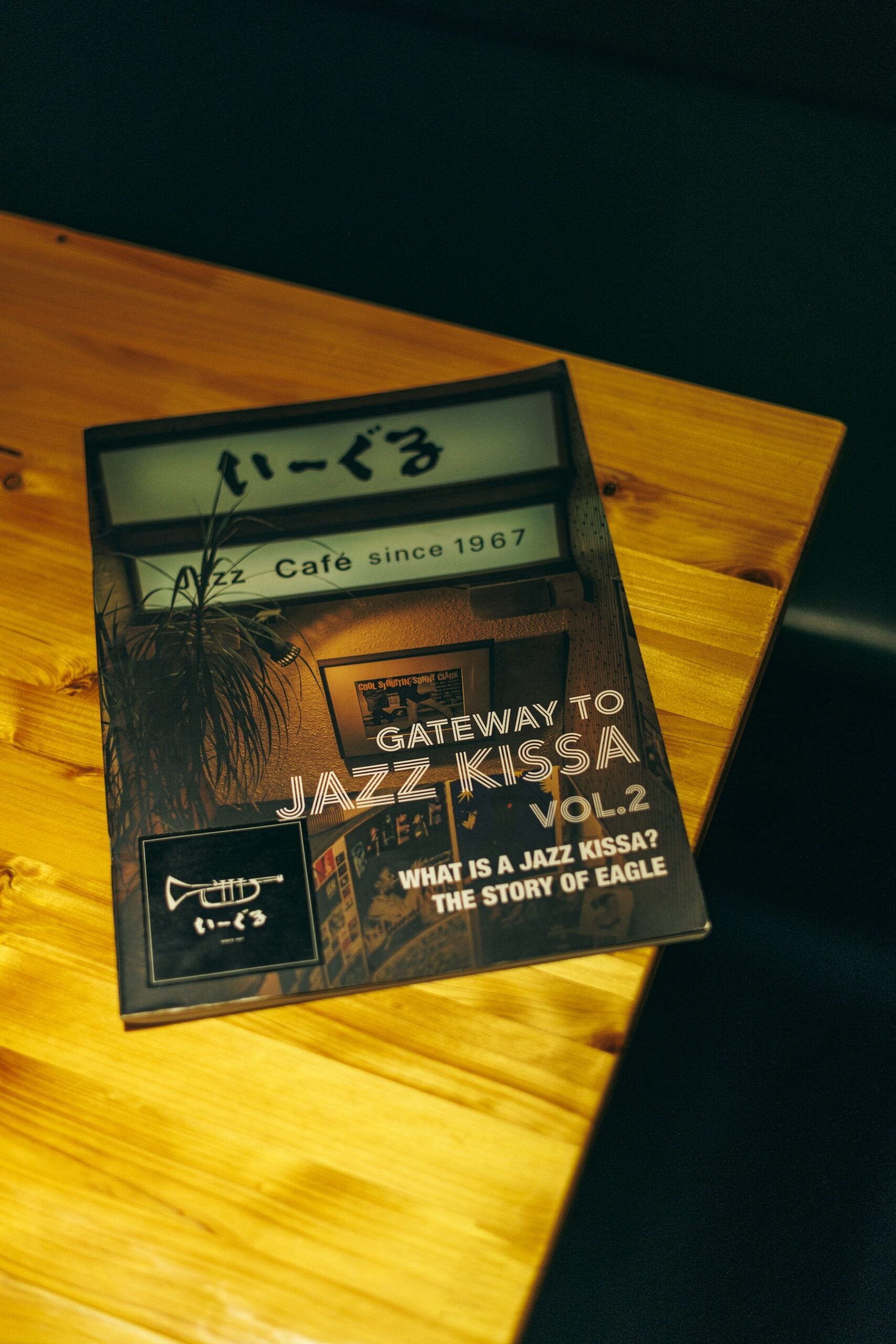CATEGORY
AREA
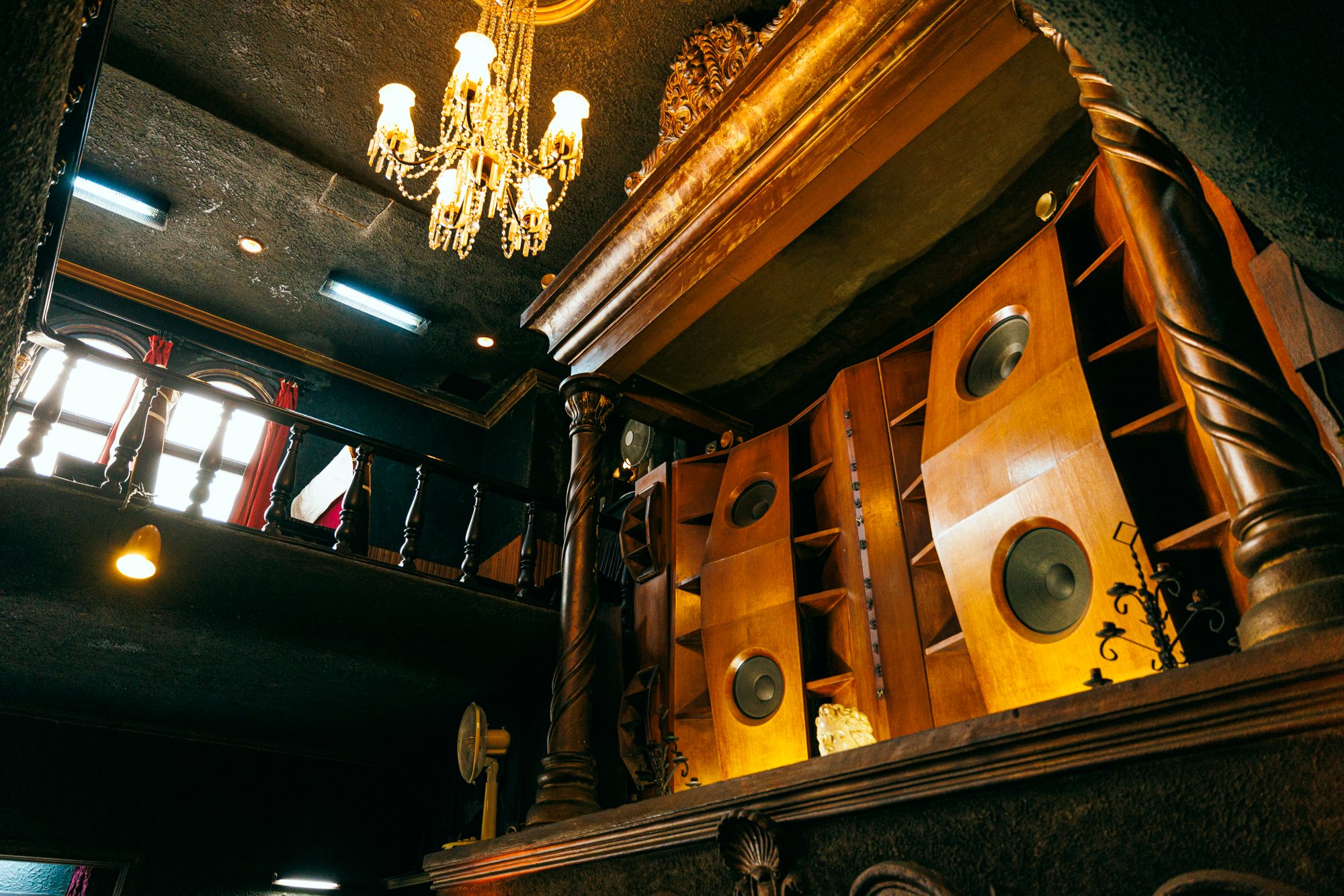
2025.03.05
The "music café" is a unique Japanese style of coffee shop that originated in the 1920s for listening to music on vinyl records. Music is not background music, but the star of the space. Visitors sip coffee and immerse themselves in the world of classical music and jazz while listening to the loud sound of vinyl records. Let's visit Tokyo's representative famous music cafes, jazz cafes, and the newest record cafes and experience the charm of the "music cafes" that continue to fascinate people throughout the ages.
A Meikyoku Kissa (a classical music café) is a special type of café designed for the appreciation of classical music.Inside, countless classical records and high-quality audio equipment are meticulously arranged, creating an atmosphere where visitors can immerse themselves in music or read in silence, free from conversation.
The serene space is designed for the purpose of enjoying music to your heart's content, and in many cases, the chairs are all facing the speakers, just like in a movie theater. Let us take you to "Meikyukafé Lion," a legend of such a classic café.
A 10-minute walk from Shibuya Scramble Crossing, the scenery becomes even more obscene as you enter the Hyakken store area on Dogenzaka. This is the oldest shopping street in Shibuya. In the middle of this area, a three-story wooden building that looks as if the passage of time has come to a standstill, the "Meikyukafé Lion" appears. Open the door and step inside. It is a miracle that it still remains in Shibuya.Stepping inside feels like entering another world.
A dimly lit space reverberates with classical music. At its center stands a towering three-meter-tall speaker, a grand presence beneath the sparkling glow of chandeliers. The chairs on the floor are arranged facing the speaker, and patrons sit in silence—some listening intently to the music, others quietly lost in thought. Here, conversation and photography are strictly prohibited.
The café houses approximately 10,000 records and CDs, and requests are welcome. Some patrons simply say "Bach," while others specify not only the piece but also the conductor, orchestra, and even the recording year. Regular visitors sometimes bring their own records. Every day at 3 p.m. and 7 p.m., a one-hour record concert is held, featuring selections chosen by the staff, with themes that change monthly.
This café, with a history spanning over 70 years, features a unique pair of speakers. A closer look reveals that the left and right speakers are different sizes.
The fourth-generation owner, Naoya Yamadera, explains:
“These speakers were custom-designed by a Toshiba engineer who was once a regular here. At the time, monaural recordings were the norm, but the speakers were adjusted to create a stereo-like effect.
In an orchestra, violins are typically positioned on the left, while lower-register instruments like cellos and contrabasses are on the right.
To replicate this spatial sound, the speakers were built with different sizes for the left and right channels.”
This ingenious idea was born from a deep passion for delivering the best possible sound experience to customers.
In today’s world, where we are accustomed to listening to music through small earphones, Meikyoku Kissa Lion offers an entirely different experience—the sensation of being enveloped in music. It’s an experience that feels like “listening with your whole body, not just your ears.” It is also a time of silent connection, where strangers in the same space share the emotional impact of the music.
The concept of "Ongaku Kissa" (music café) dates back to the 1920s.During this era, Western culture was gradually spreading in Japan, and classical music and jazz were gaining popularity. Ongaku Kissa emerged in cities like Tokyo and Osaka, offering spaces where people could enjoy records while sipping coffee or having a light meal.
However, at the time, audio equipment and imported records were prohibitively expensive for ordinary households. Additionally, in densely packed wooden neighborhoods, playing records at high volume at home was not feasible.
As a result, Ongaku Kissa flourished, reaching their peak popularity in the 1950s and 1960s. During this period, specialized cafés not only for classical music and jazz but also for folk and rock music began to appear. However, from the 1970s onward, the widespread availability of home audio systems allowed people to enjoy music at home, leading to a gradual decline in Ongaku Kissa.
In the late 2000s, analog records made a comeback, and music cafes gained younger fans in addition to those of yesteryear. This is due to the long-running Showa-era retro boom, a return to analog as a reaction to digitalization, and the material satisfaction of owning a vinyl record with a highly artistic jacket and the pleasure of owning a vinyl record.
A "jazz cafe" is a coffee shop where jazz is appreciated with vinyl records and high-end sound equipment. in the 1960s and 1970s, famous jazz cafes had owners who were well versed in Western jazz information, and jazz fans who wanted the latest imported records and music information gathered at the store to form a community. Jazz fans who wanted the latest imported records and music information gathered at these cafes and formed a community. Jazz cafes at that time were more than just a place to listen to music; they were also hubs of youth culture, art scenes, and political movements. At that time, private conversation was almost always prohibited in order to concentrate on listening to music, but today there are an increasing number of jazz cafes where people can freely engage in conversation.
One such renowned Jazz Kissa is "Eagle", which has been passionately spreading the allure of jazz since its founding in 1967. While it has evolved into a full-fledged café, it still maintains a no-talking policy until 6:00 PM.
Since the COVID-19 pandemic, more customers have been using the café as a space to focus on work, surrounded by immersive jazz music. Here, visitors can enjoy their time without being disturbed by conversations around them. Even those unfamiliar with jazz can feel at home in a Jazz Kissa.
The owner, Masahiro Goto, has been active as a jazz critic, flexibly responding to the changing times and conveying the appeal of jazz. He believes that "the raison d'etre of a jazz cafe is to convey the fun of jazz music.
He owns a total of more than 10,000 records and CDs. The role of a jazz cafe owner is editorial, Goto-san says.
While it is fine to have a jazz cafe that plays music selected by the owner's taste, at "I-Guru" we are conscious of introducing the intentions of the music makers in an easy-to-understand manner, and building a bridge between listeners and a wide range of jazz, both old and new."
For this purpose, the playlist was elaborated carefully and composed of a pleasant flow of music for approximately two hours with a gradual flow. The audio equipment is configured to accommodate a diverse range of jazz albums without bias, ensuring a natural sound. To prevent multiple reflections of sound (flutter echo), the ceiling inside the restaurant is sloped and there are many steps on the floor, so that the music can be enjoyed in the same way no matter where you sit.
In the United States and Europe, jazz is most commonly enjoyed at live performances. In recent years, however, Japan's unique jazz cafe culture has been attracting attention from overseas, and people from all over the world have been visiting "I-Guru". In addition, listening bars inspired by jazz cafes have sprung up in many countries, showing a new expansion.
Born in the 2020s, "record cafes" are equipped with a record player and headphones at each table. Customers are free to select and listen to any record in the store. Instead of everyone in the store listening to the same song, each customer listens to the music of his or her choice, a style that is very typical of modern Tokyo. Some stores provide a detailed operation manual with the player for those who do not know how to operate the player.
PHONO Shibuya is a record café created in 2024. Each table is equipped with a player and headphones, and visitors can enjoy snacks and drinks while listening to their favorite records. For some, placing a record on the turntable and dropping the needle may be their first experience.
The owner says, "I want people to actually touch the records and feel the appeal of analog sound. The records in the store are also available for purchase.
Records are themed almost monthly, and visitors can enjoy pairing them with café menu items that match the theme. During the 80's idol specials commemorating the "100th Anniversary of the Showa Era," the menu features Neapolitan and other Showa-era pure café dishes.
Various events are also held. PHONO Shibuya aims to be a "communi-cafe," a place where a community is born through record music.
Music cafes were born in Japan. The rules vary from store to store, with some completely banning private conversation, others allowing free conversation, and still others restricting private conversation only during certain hours. Many music cafes clearly state the rules in the menu book, on the wall, or on the door, so be sure to check them before enjoying the music.
A writer and coffee shop photographer, he has been reporting on cafes and coffee shops across Japan since 2000, and has published many books. His publications include "Kyoto KOMINJYA CAFE BIJYOU" (Sekaibunka Sha), "New Tokyo Coffee Shops" (Jitsugyo no Nihonsha), and "Kamakura SHONAN CAFE WALK" (Shodensha).
Instagram @yohko_kawaguchi

